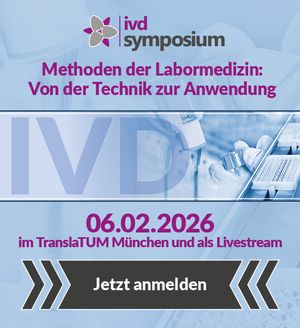Literatur [1] Dahlback B. Coagulation and inflammation close allies in health and disease. Semin Immunopathol 2012; 34: 1–3
[2] Levi M, van der Poll T. Inflammation and coagulation. Crit Care Med 2010; 38: 26–34
[3] Renne T. The procoagulant and proinflammatory plasma contact system. Semin Immunopathol 2012; 34: 31–41
[4] Maas C et al. The plasma contact system 2.0. Semin Thromb Hemost 2011; 37: 375–381
[5] Muller F, Renne T. Novel roles for factor XII-driven plasma contact activation system. Curr Opin Hematol 2008; 15: 516–521
[6] Leeb-Lundberg LM et al. Classification of the Kinin Receptor Family: from Molecular Mechanisms to Pathophysiological Consequences. Pharmacol Rev 2005; 57: 27–77
[7] Maas C, Renne T. Regulatory mechanisms of the plasma contact system. Thromb Res 2012; 129 Suppl 2: 73–76
[8] Ratnoff OD, Colopy JE. A familial hemorrhagic trait associated with a deficiency of a clot-promoting fraction of plasma. J Clin Invest 1955; 34: 602–613
[9] Mackman N (2004) Role of tissue factor in hemostasis, thrombosis, and vascular development. Arterioscler Thromb Vasc Biol 2004; 24: 1015–1022. Epub 2004 Apr 1029
[10] Pauer HU et al. Targeted deletion of murine coagulation factor XII gene-a model for contact phase activation in vivo. Thromb Haemost 2004; 92: 503–508
[11] Renne T et al. Defective thrombus formation in mice lacking coagulation factor XII. J Exp Med 2005; 202: 271–281
[12] Kleinschnitz C et al. Targeting coagulation factor XII provides protection from pathological thrombosis in cerebral ischemia without interfering with hemostasis. J Exp Med 2006; 203: 513–518
[13] Salomon O et al. Patients with Severe Factor XI Deficiency Have a Reduced Incidence of Venous Thromboembolism. Blood 2009; 114: 3491A
[14] Nickel KF et al. Factor XII as a Therapeutic Target in Thromboembolic and Inflammatory Diseases. Arterioscler Thromb Vasc Biol 2017; 37: 13–20
[15] Gailani D, Renne T. Intrinsic pathway of coagulation and arterial thrombosis. Arterioscler Thromb Vasc Biol 2007; 27: 2507–2513
[16] Gailani D, Renne T. The intrinsic pathway of coagulation: a target for treating thromboembolic disease? J Thromb Haemost 2007; 5
[17] Darbousset R et al. Tissue factor-positive neutrophils bind to injured endothelial wall and initiate thrombus formation. Blood 2012; 120: 2133–2143
[18] Muller F et al. Platelet polyphosphates are proinflammatory and procoagulant mediators in vivo. Cell 2009; 139: 1143–1156
[19] Verhoef JJ et al. Polyphosphate nanoparticles on the platelet surface trigger contact system activation. Blood 2017; 129: 1707–1717
[20] Labberton L et al. Neutralizing blood-borne polyphosphate in vivo provides safe thromboprotection. Nat Commun 2016; 7: 12616
[21] Labberton L et al. A flow cytometry-based assay for procoagulant platelet polyphosphate. Cytometry B Clin Cytom 2016
[22] Oschatz C et al. Mast cells increase vascular permeability by heparin-initiated bradykinin formation in vivo. Immunity 2011; 34: 258–268
[23] Larsson M et al. A factor XIIa inhibitory antibody provides thromboprotection in extracorporeal circulation without increasing bleeding risk. Sci Transl Med 2014; 6: 222ra217zurück


